You can monitor muscle recovery using wearable sensors that track EMG signals for real-time fatigue detection, heart rate variability for autonomic nervous system assessment, and biomechanical data through inertial and pressure sensors. These devices analyze muscle contractions, sleep quality, and movement patterns to prevent overuse injuries and optimize training loads. Research shows exceeding 9,254 accelerations increases non-contact injury risk by 511%. Understanding how to interpret this data will transform your training approach.
Understanding Wearable Sensors for Muscle Recovery Monitoring
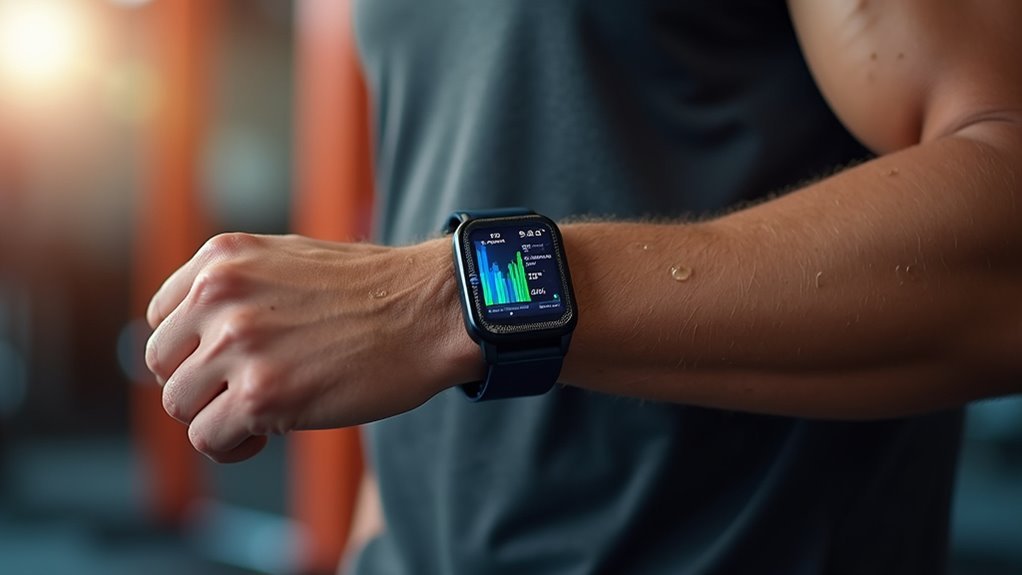
Wearable sensors have revolutionized how you can monitor muscle recovery, offering unprecedented insights into your body’s healing processes.
These sophisticated devices utilize various technologies to track your muscle activity in real-time. Inertial sensors monitor your body movements and orientation during recovery exercises, while capacitive sensors detect changes in muscle expansion or contraction.
Piezoresistive sensors measure muscle force by changing resistance under pressure, and stretch sensors track muscle length throughout rehabilitation movements.
You’ll also find ultrasonic sensors that use low-power ultrasound to assess muscle function, plus pressure sensors embedded in wearables to monitor joint activity.
Advanced analysis algorithms process this data to evaluate your recovery progress, providing personalized feedback that helps optimize your training routines and prevent injuries. This continuous monitoring capability allows healthcare professionals to make timely adjustments to your rehabilitation program based on real-time performance data.
EMG Technology and Real-Time Muscle Fatigue Detection
While wearable sensors provide valuable insights into muscle activity, electromyography (EMG) technology offers the most direct window into your muscle’s electrical activity and fatigue state. Unlike other monitoring methods, EMG captures the actual electrical signals your muscles produce during contractions, revealing fatigue through changes in amplitude and frequency patterns.
Modern wearable EMG devices use real-time signal processing to classify your fatigue levels instantly. They analyze key features like RMS voltage and frequency shifts to determine when you’re pushing too hard. Integration of sEMG sensors into compression shorts allows for unobtrusive performance assessment during training and competition.
| Fatigue Level | RMS Voltage | Signal Characteristics |
|---|---|---|
| Relaxed | <1V | Low amplitude, stable frequency |
| Moderate | 1-2V | Increased amplitude, slight frequency shift |
| Extensive | >2V | High amplitude, significant frequency decline |
This real-time feedback helps you optimize training intensity and prevent overexertion.
Heart Rate Variability and Sleep Quality Assessment
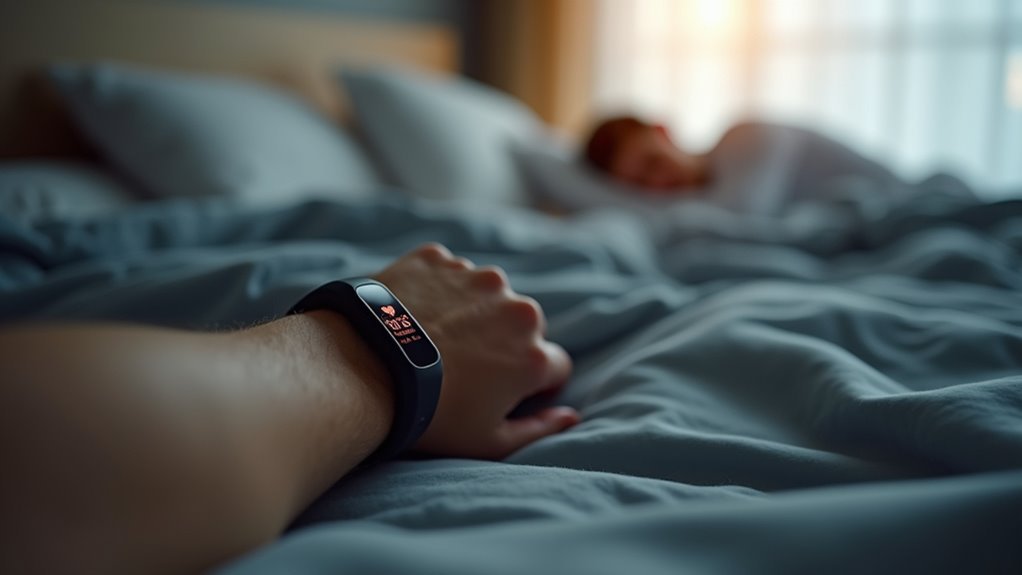
Beyond muscle electrical activity, your heart’s rhythm patterns reveal crucial insights into recovery status through heart rate variability (HRV) analysis. HRV measures your autonomic nervous system’s response to training stress, helping you enhance recovery timing.
Your HRV responds differently based on exercise intensity and type:
- High-intensity training suppresses HRV for up to 72 hours, indicating ongoing recovery needs.
- Interval training causes slower parasympathetic recovery than constant-intensity sessions.
- Moderate aerobic exercise often increases next-morning HRV, supporting recovery.
- Progressive HRV declines over 3-4 weeks signal potential overtraining syndrome.
Sleep quality directly impacts HRV measurements since deep and REM phases restore parasympathetic tone. Poor sleep decreases HRV, reducing your recovery capacity. Athletes can perform well despite experiencing low HRV readings, as decreased values don’t always predict performance decrements.
Modern wearables track both metrics simultaneously, providing thorough recovery assessment for ideal training adjustments.
Preventing Overuse Injuries Through Smart Monitoring
Smart monitoring transforms recovery insights into proactive injury prevention strategies that keep you training consistently. Your wearable sensors quantify external workload metrics like total distance and high-speed running, identifying dangerous thresholds before injuries occur.
When you exceed 9,254 accelerations in three weeks, your non-contact injury risk jumps 511%. Machine learning algorithms analyze your movement patterns, detecting biomechanical abnormalities that precede overuse injuries.
Real-time monitoring through inertial measurement units captures joint angles and load distribution, revealing movement inefficiencies before symptoms appear. You’ll receive immediate feedback to adjust training intensity and enforce proper rest intervals.
Your device tracks neuromuscular control changes during fatigue, alerting you when injury risk peaks. Muscle oxygen sensors help create personalized rehabilitation plans by providing precise physiological data during your recovery process. This objective data enables personalized workload management, ensuring ideal recovery between sessions while preventing cumulative mechanical stress.
Optimizing Training Load Based on Recovery Data
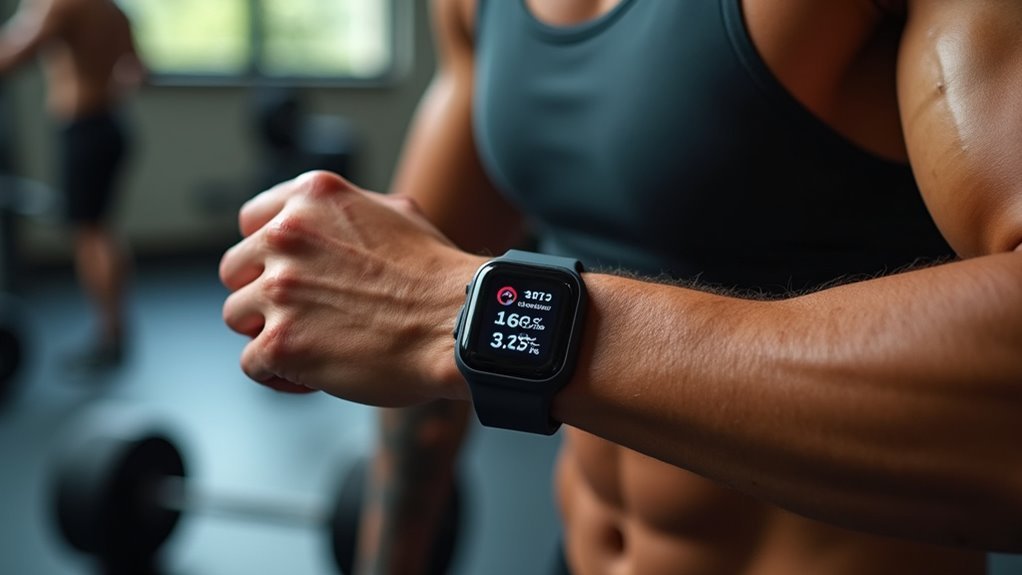
When your recovery data reveals declining muscle oxygen saturation or elevated stress markers, you can’t simply push through with predetermined training loads. Your wearable sensors provide real-time insights that demand immediate training adjustments to prevent overtraining and optimize performance.
Recovery data doesn’t lie—when stress markers spike, smart athletes adjust immediately rather than forcing through predetermined workouts.
Here’s how to leverage your recovery data effectively:
- Adjust intensity based on HRV readings – Lower heart rate variability indicates incomplete recovery, requiring reduced training intensity.
- Modify volume using muscle fatigue data – sEMG sensors show when muscles need extended recovery time.
- Schedule rest days through sleep quality metrics – Poor sleep patterns signal the need for complete training breaks.
- Customize nutrition timing with biomechanical analysis – Movement pattern changes indicate when your body needs additional fuel.
This data-driven approach guarantees you’re training smart, not just hard. Professional sports organizations increasingly rely on effective communication between athletes and coaching staff to interpret wearable data accurately and implement appropriate training modifications.
Frequently Asked Questions
How Much Do Professional-Grade Wearable Muscle Recovery Monitors Typically Cost?
You’ll spend between $250-$800 for most professional-grade wearable recovery monitors, though WHOOP’s $199/year subscription model and premium Marc Pro devices at $995+ represent the pricing extremes you’ll encounter.
Can Wearable Devices Accurately Monitor Muscle Recovery in Water Sports?
You can monitor muscle recovery in water sports with wearables, but accuracy decreases during high-intensity activities. Water immersion affects sensor contact, reducing heart rate and oxygen readings, though multiple sensors improve overall assessment.
How Long Do Batteries Last in Continuous Muscle Monitoring Wearables?
You’ll get about three hours of continuous muscle monitoring from current ultrasound-based wearables with lithium-polymer batteries. You’ll need frequent recharging, though some devices offer up to eight hours.
Are There Any Skin Allergies or Reactions From Long-Term Wearable Use?
You can develop allergic reactions from materials like acrylates and nickel in wearables. Long-term use may cause contact dermatitis, redness, and itching from trapped moisture and friction against your skin.
Which Wearable Brands Are Most Trusted by Olympic Athletes?
You’ll find Garmin, Suunto, and Polar leading traditional sports wearables among Olympic athletes. WHOOP and Oura dominate recovery tracking, while Amazfit’s gaining popularity for rugged training monitors with exceptional battery life.
In Summary
You’ve now got the tools to transform your training through wearable muscle recovery monitoring. By tracking EMG signals, heart rate variability, and sleep patterns, you’ll prevent overuse injuries before they sideline you. Don’t guess about your recovery—let the data guide your training decisions. When you’re consistently monitoring these metrics, you’ll optimize your workload, reduce injury risk, and maximize performance gains. Your body’s telling you everything you need to know.

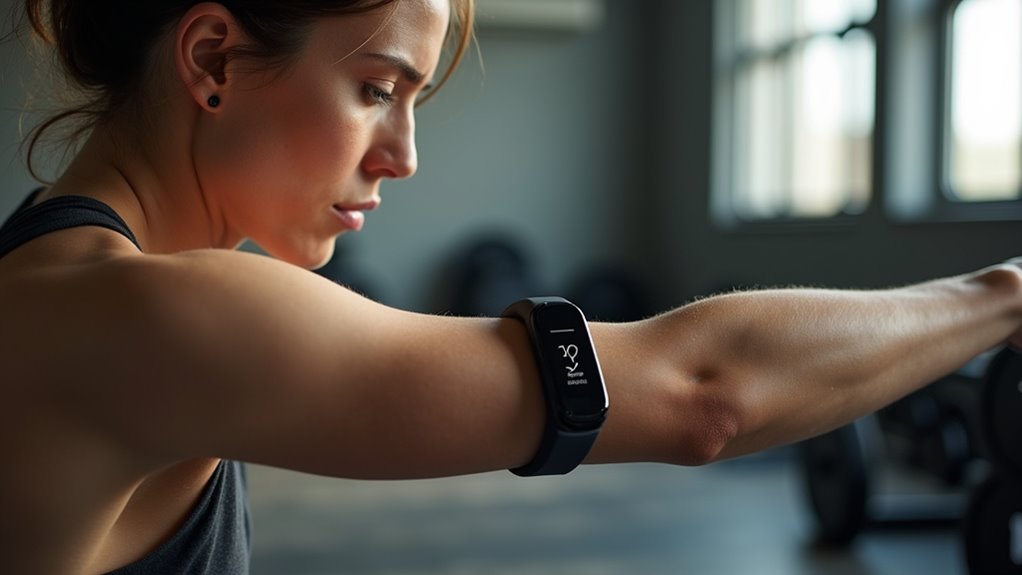
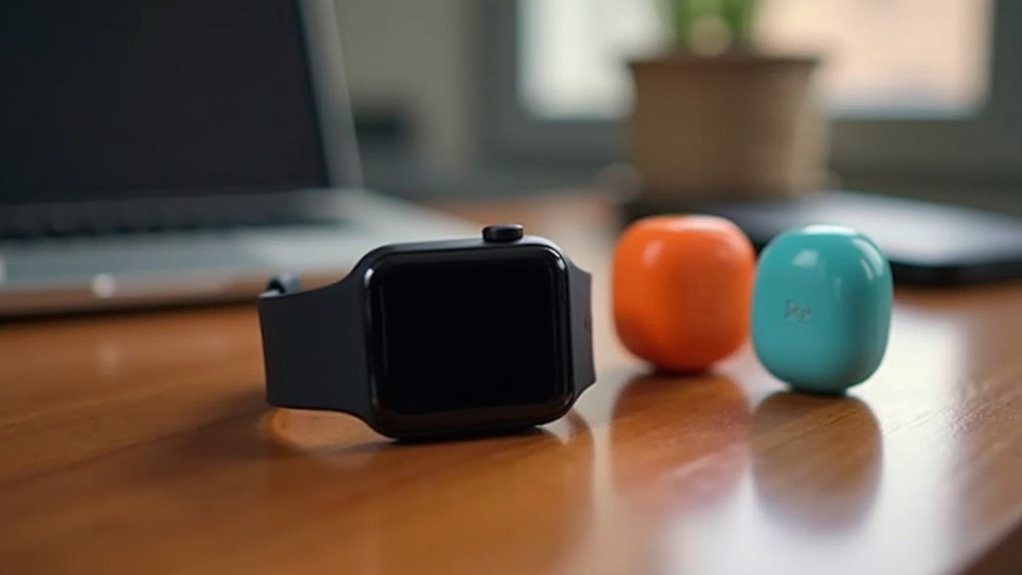
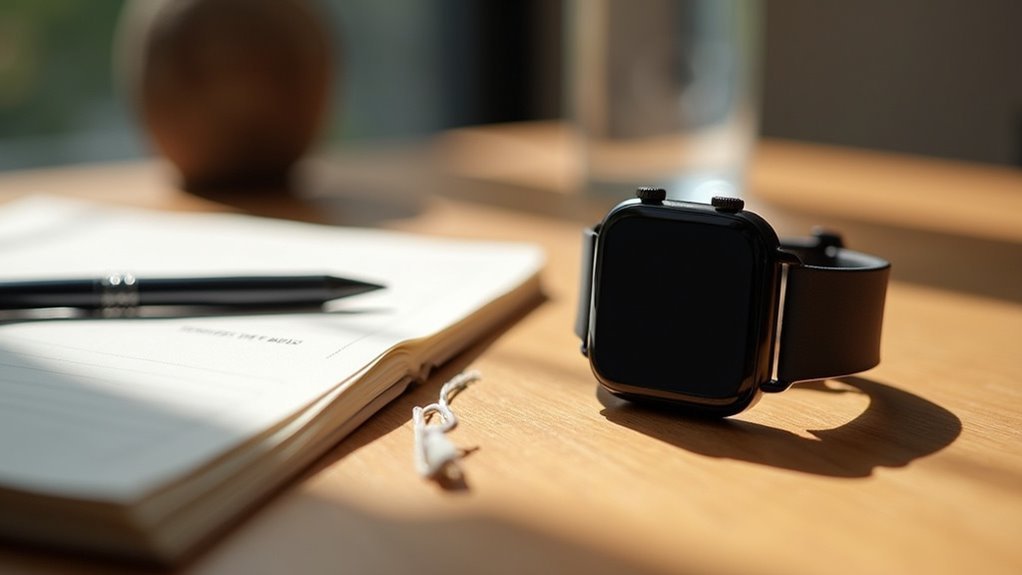
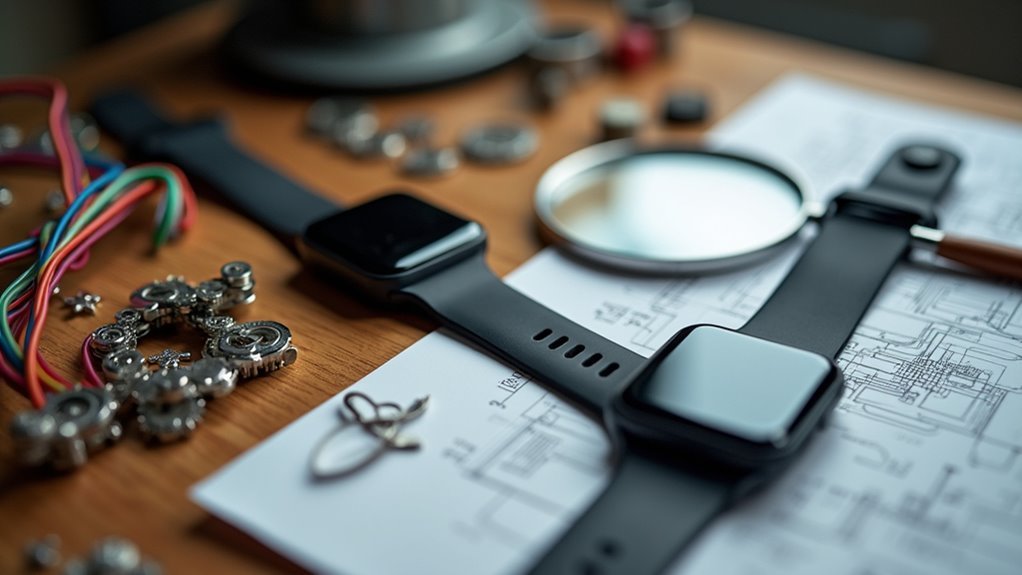
Leave a Reply